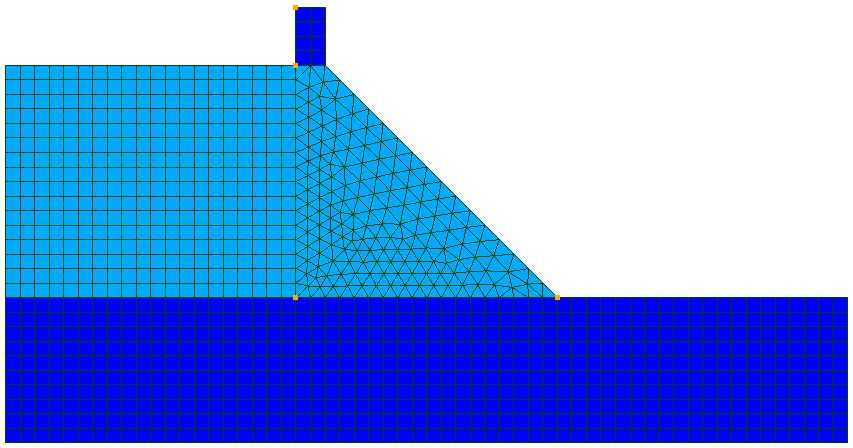3. Modeling A#
3.1. Characteristics of modeling#
We use a 2D_ FLUIDE, D_ PLAN, 2D_, 2D_ FLUI_STRU, 2D_, D_ PLAN_ABSO and 2D_ FLUI_ABSO modeling in coupled linear dynamics (\((u,p,\mathrm{\varphi })\) formulation). IFS
This modeling is created to calculate a comparison base for formulation \((u,p)\).
3.2. Characteristics of the mesh#

Figure 3.2-a : 2D dam mesh
In the we show the dam mesh which will be composed of 908 linear quadrangular surface elements, 324 linear triangular surface elements and 1151 nodes.
3.3. Tested sizes and results#
We test the accelerations at time \(t=0.98s\) at the post-processing points for the X and Y directions:
Table 3.3-1 : Quantities tested for modeling A
Identification |
Reference type |
A-AX node |
NON_REGRESSION |
A-AY knot |
NON_REGRESSION |
B-AX node |
NON_REGRESSION |
B-AY knot |
NON_REGRESSION |
C-AX node |
NON_REGRESSION |
C-AY knot |
NON_REGRESSION |
D-AX node |
NON_REGRESSION |
D-AY node |
NON_REGRESSION |
We cannot say anything in absolute terms about the precision of these values because we are testing non-regression values.